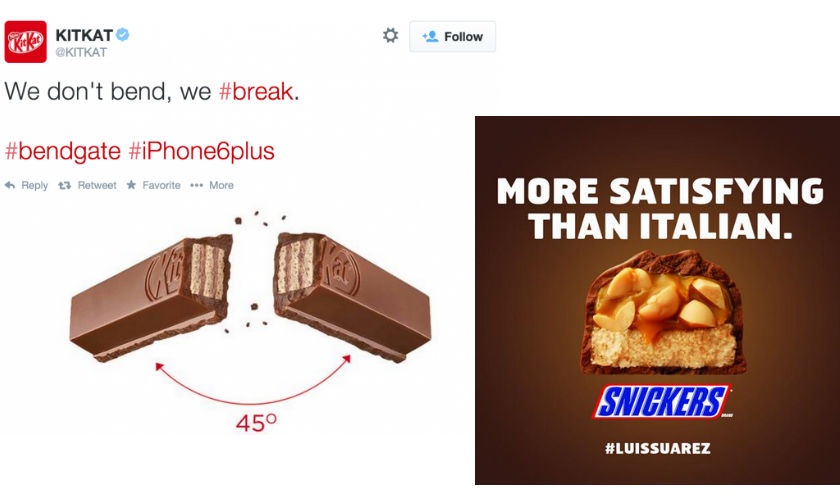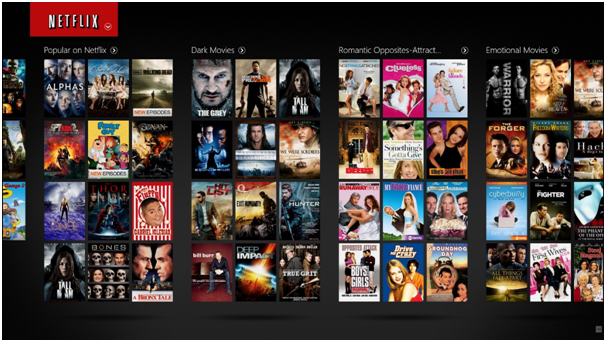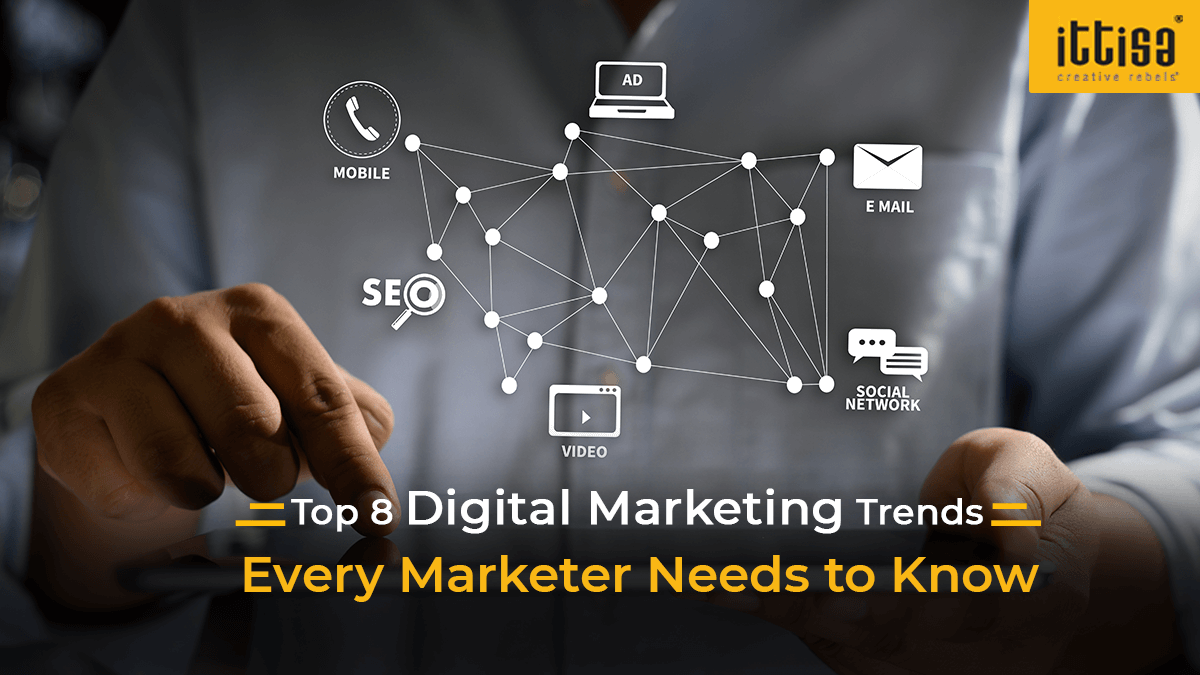April 05, 2015
Real Time Marketing: Living in The Moment and Making it Work
Real Time Marketing is a relatively new kid in the town amongst other marketing tools. The whole buzz about the Real Time marketing shot up on that fine day when Oreo seized the Superbowl conversation in 2013 with a well-timed tweet that shook the digital world by storm.
When the power went out in the Superdome in New Orleans, halting Super Bowl XLVII for an agonizing 34 minutes, Oreo quickly grabbed the opportunity. It tweeted, “Power out? No problem”accompanied by an image of an illuminated oreo cookie in a dark background with the message “You can still dunk in the dark.”
So what was special about this? It was opportunistic, quick-witted and creative. Most of all, it was well-timed! It was into the moment and people could relate to it instantly and Oreo ended up with 16000 retweets and its Instagram followers shot up to 36,000 from a mere 2000. Now that is something spectacular.
Well, don’t they say, “ Strike while the iron is still hot”?
Just as there are one too many success stories of real time marketing, there are an equal amount of failed attempts too. Recently, when #TheDress phenomenon hit Social Media channels, many brands from all over the world tried to leverage on it, but failed miserably.
Take these for example.
Whatever they were trying to communicate, it sure didn’t grab their customers’ attention.
#TheDress and Food? Mmm... that’s a little far-fetched, don’t you think?
So, What makes Real Time marketing work?
What made a simple one liner by Oreo hit the top trending topic in the digital world? Why did it fare better than the other well-thought out marketing campaigns that did their rounds at the moment?
This is so because people perceive Real Time marketing as relatable, creative and relevant. In a sea of digital jargons and processed data, a real time post comes as a whiff of fresh air.
When it is about something people are currently framing opinions about, it piques the reader’s interest. Customers are acutely aware of Social Media Marketing Strategies that have been thought out for weeks to get them to buy something. In such a scenario, when a real-time post pops up, they quickly lap it up.
Another reason why RTM ticks is the lightning speed at which news travels in the digital space. Nowadays, when there is a breaking news, what is the first thing you turn to for information? The television or most probably Social Media or online news channels.
The world has increasingly become digital and anything catchy that goes up online goes viral within seconds.
How do you leverage the power of Real Time marketing?
"Operating in real-time is the biggest trend and the biggest challenge," says Adam Kapel, senior vice president of marketing and insights with real-time advertising company Taykey.
Preaching about it is easy, but pulling it off is not everyone’s cup of tea. Some try too hard, some stay mediocre. So how do you effectively leverage on real time events to effectively market your brand? Here are some insights.
1. Be alert and be informed
Successful RTM hinges mainly on keeping your ears and eyes open to the conversations happening on Social Media. Only then would you be able to grab the opportunity at the right moment.
Also be aware that real time isn’t just about picking up on a breaking news and tweeting about it. This is otherwise called ‘news jacking’. It is more about ‘trend jacking’, about inserting your brand in relevant, timely conversations on an ongoing basis. Yes, it is a continuum.
2. Act quick
You have to be not just alert but also think on your feet. Real-time marketing works best when the response is quick and is done within hours of a news break out because that is when all the conversations are happening. As you delay, the buzz is vanishing and your tweet or post could well go unnoticed and you fail to engage your potential customers or clients.
“Develop a business culture that encourages speed over sloth”, says David Meerman Scott, a famous marketing and sales strategist.
3. Relate it to your brand
Tweeting about anything and everything current is never the right decision. Unless and until you are able to align your brand ethos with the breaking news and trends, your attempt could be a failure. Produce content that people can relate to and would want to share.
4. Understand your audience
Keeping a finger on the pulse of your audience is mighty important. Do they enjoy a well thought out discussion or a witty banter? Do they enjoy some light, snackable content on Twitter or Instagram? Once you figure out the different platforms your audience relies on, make sure you determine their mindset. Listen to and anticipate customer needs and act accordingly.
5. Manage your customers real time
RTM is not just about posting witty, relatable content and then sitting back and wallowing in the glory. For a successful real-time marketing, there needs to be an ongoing community management. Be fully present in the conversations taking place around your post and respond to your customer’s real time needs.
Show them you care ;)
Why is Real time Marketing Important to the Modern Brand?
The world of online marketing is ever-evolving. Trends come and trends go in the blink of an eye. Nothing is permanent when it comes to techniques that are adopted in a product’s marketing. However, according to leading experts in the field, there is one trend that is here to stick – real time marketing.
First off, what is real time marketing?
The term ‘real-time marketing’ brings to mind a well-timed tweet or any other social media reaction to an event that is happening at a real time. But real-time marketing involves a lot more than just a wordy response.
It includes collecting inputs from customers and delivering a relevant, personalized message back to them. Businesses deliver responses on real-time via Twitter and Facebook within seconds. E.g. If a customer were to tweet a bank requesting details of their working hours, a reply can be posted the very next minute.
It gets more complex when product delivery is involved – these processes involve details of previous purchases, available stock and location.
What makes real-time marketing more effective today?
With the entire business community taking to social media networking with an enthusiasm that has seldom been seen before with other media, engaging customers has become less about selling a product or service, and more about building important relationships. Real-time marketing achieves this goal by personalizing marketing needs.
Brands these days have started to take personalisation very seriously. All marketing collateral has to bear the same feel across various channels, and the same message has to come across to customers irrespective of the medium.
Tailoring marketing messages to the preferences of each individual customer is what clicks. So, whether it is an email, or a tweet, or even a simple message delivered via WhatsApp, personalisation has taken a center stage, and the customers have loved it thus far.
How can companies personalize and homogenize real time marketing?
A sure shot way of doing it is by having a sound, interconnected system to power all the marketing messages running in the background. This way, a single marketing view will be created, ensuring that every touch point a customer has with a company’s messages is highly personalized.
A good example of this is Netflix. The provider of on-demand Internet streaming media is a natural leader when it comes to real-time personalisation. By using customer data and viewing habits spectacularly well, it recommends targeted content to its users.
What comes next?
When brands and businesses collect massive amounts of data from customers, they have to be utilised prudently. The data has to enable proximity marketing; in-store beacon messages have to be projected clearly. Marketing channels also have to be connected whilst portraying the same message. The collected user data can also be used to leverage purchase history, thereby helping a business understand the customer’s likes and preferences better. This in turn will enable the business to market specific, targeted goods to the customer, resulting in increased sales.
The collected user data can also be used to leverage purchase history, thereby helping a business understand the customer’s likes and preferences better. This, in turn, will enable the business to market specific, targeted goods to the customer, resulting in increased sales.
The most noteworthy aspect of real-time marketing and the modern brand is that segments have slowly started to disappear. Targets that used to be represented as homogenous groups have now been replaced by individuals with similar profiles who, for all their parallels, warrant very specific marketing that’s tailored to their needs.
Markets have upped the level and changed the type of communication, personalizing location-based marketing via PCs and mobile phones.
It comes as no surprise to us at Ittisa that real-time marketing has created such a large impact. With an eye on these trends for more than a year now, we have observed that as customers grow more comfortable with their devices, the data they give out to brands help the latter to make the overall consumer experience more enjoyable.
So, are you ready to set yourself up for some speed and carry out some real-time action? Let us know, leave your comments and insights below!









